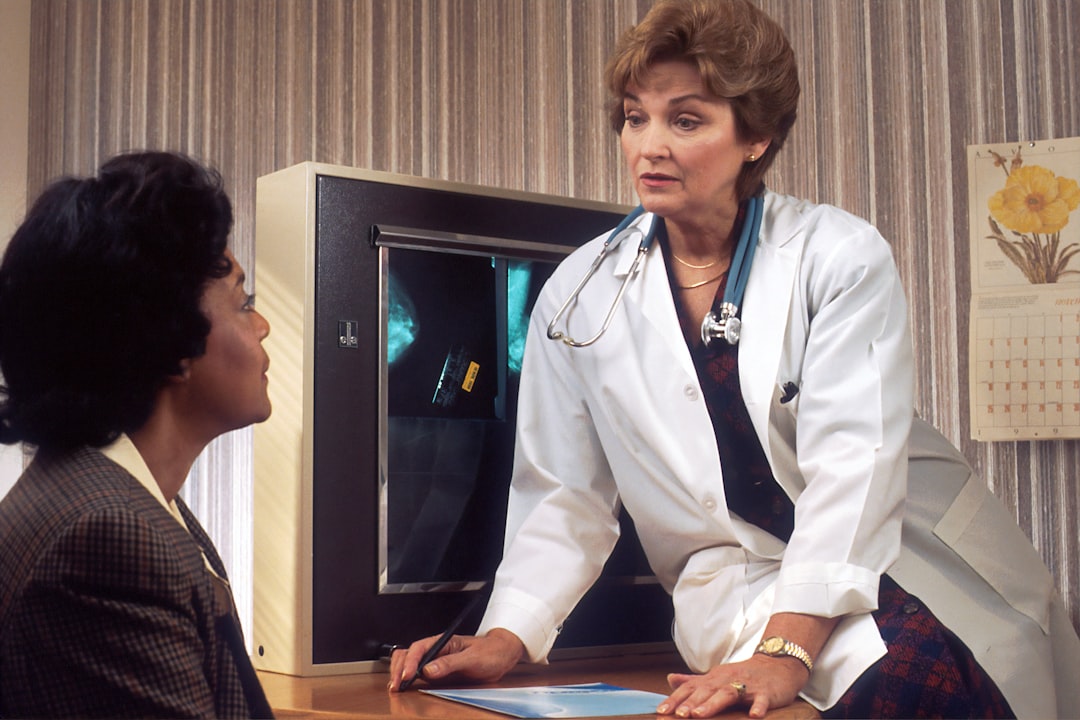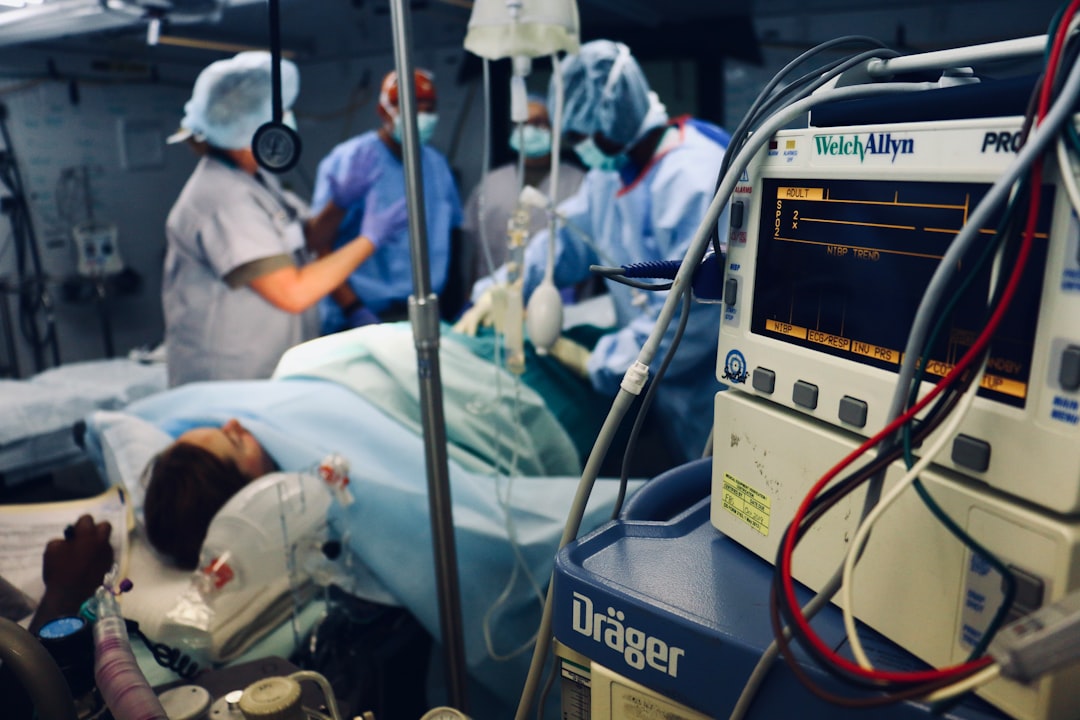Common Types of Surgical Errors
Surgical errors, often referred to as "never events," are unfortunate occurrences in the medical field that can have grave consequences for patients and healthcare providers alike. Despite advancements in medical technology and increased awareness around patient safety, these errors still occur with alarming regularity. Understanding the common types of surgical errors is crucial for developing strategies to prevent them, thereby safeguarding patient well-being.
One of the most prevalent types of surgical errors is wrong-site surgery. This occurs when a procedure is performed on the wrong part of the body or even on the wrong patient altogether. Such mistakes can lead to devastating outcomes, including unnecessary pain, additional surgeries, and prolonged recovery times. Wrong-site surgery often stems from communication breakdowns within the surgical team or misinterpretations of medical records.
Retained surgical instruments represent another significant category of surgical errors. This type of error happens when tools such as sponges or clamps are inadvertently left inside a patient's body after an operation. The consequences can be severe, leading to infections, internal damage, and sometimes requiring further invasive procedures to remove the retained items. These incidents highlight the importance of meticulous counting protocols before and after surgeries.
Anesthesia-related errors also pose substantial risks during surgical procedures. Administering too much or too little anesthesia can result in dire situations-either causing patients to wake up mid-surgery or putting them at risk for life-threatening complications like cardiac arrest. An accurate assessment of a patient's medical history and careful monitoring during surgery are essential measures to mitigate these risks.
Another common issue is postoperative complications due to inadequate care following surgery. Patients may suffer from infections if antiseptic measures are not strictly followed or if there is insufficient postoperative monitoring. Ensuring that healthcare staff adhere to stringent hygiene practices and provide comprehensive follow-up care can significantly reduce these occurrences.
Lastly, technical failures during surgery-whether due to human error or equipment malfunction-can lead to critical incidents affecting patient outcomes. Surgeons must remain vigilant about maintaining their skill levels through ongoing education and training while ensuring all equipment is regularly maintained and functioning correctly.
In conclusion, while surgical errors can never be entirely eliminated due to the inherent complexities involved in medical procedures, understanding their common forms allows healthcare professionals to put preventive measures in place effectively. By fostering an environment focused on communication, accountability, and continuous improvement within surgical teams, we move closer towards minimizing these potentially life-threatening mistakes and enhancing overall patient safety.
Causes and Contributing Factors
Surgical errors are a significant concern in the medical field, leading to severe consequences for patients and healthcare providers alike. Understanding the causes and contributing factors behind these errors is crucial for developing strategies to prevent them and enhance patient safety.
At the forefront of causes is human error, which can occur at any stage of the surgical process. This includes mistakes made during preoperative planning, intraoperative procedures, or postoperative care. Human errors often stem from fatigue, inadequate training, miscommunication among team members, or even cognitive overload due to complex cases or multitasking environments. Inadequate communication is particularly problematic as surgery involves a multidisciplinary team; any lapse in exchanging vital information can lead to critical mistakes.
Another major factor contributing to surgical errors is systemic issues within healthcare institutions. Poorly designed systems can foster an environment where errors are more likely to occur. For instance, lack of standardized protocols and checklists can result in inconsistency in surgical practices. Overcrowded schedules and understaffing may force surgeons and medical staff into working long hours without sufficient breaks, increasing the likelihood of exhaustion-related errors.
Technological factors also play a role in surgical errors. While technological advancements have generally improved surgical outcomes, they also introduce new potential for error. For example, reliance on complex machinery such as robotic surgery systems requires specialized training; without it, there could be misuse or malfunction leading to adverse events. Additionally, technical failures or software glitches can disrupt operations unexpectedly.
Moreover, environmental factors within the operating room contribute significantly to surgical mishaps. Distractions from irrelevant conversations or interruptions during surgery can break the concentration of the operative team. Operating rooms that are not ergonomically designed may cause physical strain on surgeons over time, potentially affecting their performance.
Lastly, organizational culture within hospitals impacts how surgical procedures are conducted and how errors are addressed when they occur. A culture that does not encourage open discussion about mistakes may lead to underreporting of near-misses or actual errors. This lack of transparency prevents learning from past incidents and hinders efforts towards improvement.
In conclusion, addressing surgical errors requires a comprehensive approach that considers both human and systemic factors. By fostering clear communication channels within teams, implementing robust training programs for medical professionals, enhancing system designs for efficiency and safety, embracing technology with caution through adequate preparation, optimizing operating room environments to minimize distractions and strain-and cultivating an organizational culture that prioritizes patient safety above all-healthcare institutions can make substantial strides toward reducing these unfortunate occurrences in surgery settings.
Impact on Patients and Healthcare Providers
Surgical errors, though often unintended, can have profound and far-reaching effects on both patients and healthcare providers. These errors, which might include wrong-site surgeries, retained surgical instruments, or anesthesia mishaps, are not only a major concern for patient safety but also carry significant emotional and professional consequences for the medical staff involved.
For patients, the impact of a surgical error can be devastating. Physically, they might endure unnecessary pain or complications that could prolong recovery times or lead to additional surgeries. In severe cases, surgical errors can result in permanent disability or even death. Beyond the physical ramifications, there is an emotional toll as well. Patients may experience a loss of trust in the healthcare system and their caregivers. This breach of confidence can lead to anxiety and fear about future medical procedures, affecting their overall mental health and well-being.
The psychological impact on patients cannot be underestimated. Many may suffer from post-traumatic stress disorder (PTSD), depression, or anxiety following such incidents. The realization that an error occurred during what was supposed to be a controlled and safe procedure can lead to feelings of vulnerability and helplessness. This emotional distress is compounded by potential financial burdens due to additional medical costs or lost wages during recovery.
Healthcare providers are also significantly affected by surgical errors. For surgeons and their teams, these incidents can evoke intense feelings of guilt and remorse. They enter medicine with the intent to heal; thus, causing unintentional harm stands in stark contrast to their professional ethos. The personal anguish associated with making a mistake in surgery can lead to what some term "the second victim syndrome," where healthcare workers experience trauma similar to that of the patient.
Moreover, these errors have professional consequences for providers. There may be legal repercussions including malpractice suits which not only strain financial resources but can also tarnish reputations built over years of dedicated service. These situations often necessitate comprehensive reviews and changes in practice protocols which require time-consuming retraining efforts.
In response to such errors, hospitals and clinics increasingly emphasize creating a culture of safety where open communication is encouraged when mistakes occur - encouraging learning rather than blame-shifting helps prevent future incidents while supporting those involved emotionally as well as professionally.
In conclusion, surgical errors represent significant challenges for both patients who endure them directly and healthcare providers tasked with preventing them at all costs - underscoring the critical importance of robust safety measures within operating rooms worldwide coupled with compassionate care strategies aimed at mitigating impacts when things go awry inadvertently despite best intentions practiced diligently day-in-day-out across medical landscapes globally today more than ever before thanks largely part due ongoing advances technology alongside heightened awareness issues surrounding patient safety overall ultimately benefiting everyone concerned long-term alike irrespective roles played therein respectively accordingly without exception whatsoever henceforth indefinitely moving forward together collaboratively hand-in-hand unified common purpose shared vision better tomorrow brighter future ahead always undeniably so indeed!
Prevention Strategies and Best Practices
Surgical errors, though often rare in the grand scheme of medical procedures, can have profound impacts on patients' lives and healthcare systems. Preventing these errors involves a multifaceted approach that incorporates rigorous strategies and adherence to best practices. By understanding and implementing these measures, healthcare providers can significantly reduce the incidence of surgical mistakes and enhance patient safety.
At the forefront of prevention strategies is comprehensive training for all surgical staff. This includes not only technical skills but also the development of communication and teamwork abilities. Surgical teams that communicate effectively are less likely to encounter misunderstandings or oversights that could lead to errors. Regular simulation exercises and team-building activities can fortify these skills, creating an environment where each member understands their role and responsibilities clearly.
Another critical strategy is the implementation of standardized protocols and checklists, such as those advocated by the World Health Organization's Surgical Safety Checklist. These tools ensure that essential steps are not overlooked during preoperative, intraoperative, and postoperative phases. Checklists serve as cognitive aids for healthcare professionals, ensuring consistency in practice even amidst high-pressure situations.
Technological advancements also play a pivotal role in preventing surgical errors. The integration of electronic health records (EHRs) allows for more accurate tracking of patient information across different departments. Additionally, innovations like computer-assisted surgeries provide surgeons with enhanced precision and control during operations. However, it's crucial that these technologies are complemented by proper training to maximize their benefits while minimizing potential new risks.
The culture within healthcare institutions is another significant factor influencing surgical error rates. Establishing a culture of safety encourages transparency and learning from mistakes rather than assigning blame. This involves creating an environment where staff feel comfortable reporting near misses or errors without fear of retribution. Institutions can then analyze these reports to identify patterns or systemic issues that need addressing.
Furthermore, involving patients in their care process can be a powerful preventive measure. Educating patients about their procedures helps them advocate for themselves if they notice discrepancies or have concerns about their treatment plan. Informed patients are more likely to ask questions or raise alarms when something seems amiss, providing an additional layer of oversight.
In conclusion, reducing surgical errors requires a comprehensive approach that combines education, standardization, technological integration, cultural shifts within institutions, and patient involvement. By adopting these prevention strategies and best practices, healthcare providers can enhance the safety and outcomes of surgical procedures significantly-ultimately benefiting both patients and medical professionals alike through improved trust and efficacy in surgical care delivery.
Role of Technology in Reducing Errors
In the fast-paced environment of modern healthcare, surgical procedures stand as a testament to both the skill of medical professionals and the complexity of human anatomy. However, even the most skilled surgeons are not immune to errors, which can have devastating consequences for patients. Fortunately, technology is playing an increasingly pivotal role in reducing these surgical errors, enhancing patient safety and outcomes.
One of the primary ways technology mitigates surgical errors is through advanced imaging techniques. Preoperative imaging technologies like MRI and CT scans provide detailed anatomical maps that enable surgeons to plan their procedures with precision. These images help identify potential challenges before surgery begins, allowing for more strategic approaches that minimize risk. Intraoperative imaging tools such as real-time ultrasound further aid surgeons by offering continuous updates during procedures, ensuring they remain on track according to their pre-surgical plans.
Robotic-assisted surgery represents another significant technological advancement in reducing errors. Robotic systems enhance a surgeon's capabilities by providing greater dexterity and precision than traditional manual methods can achieve. These systems can filter out hand tremors and scale motions down to minute movements that are impossible to replicate with the human hand alone. This level of precision is particularly beneficial in complex surgeries where even minor deviations could lead to complications or failures.
Moreover, technology has brought about sophisticated simulation training programs that prepare surgeons for real-world scenarios without putting patients at risk. Virtual reality (VR) and augmented reality (AR) platforms offer immersive environments where surgeons can practice intricate procedures repeatedly until they attain mastery. This kind of rehearsal reduces the likelihood of mistakes when performing actual surgeries and instills confidence in practitioners as they hone their skills in a controlled setting.
Additionally, artificial intelligence (AI) and machine learning algorithms are becoming integral components in predicting potential complications during surgery. By analyzing vast datasets from previous operations, these technologies can identify patterns that might elude human observation alone. For instance, AI systems can alert surgical teams about potential adverse events based on patient-specific factors such as medical history or genetic information, allowing for prompt intervention before issues arise.
Furthermore, electronic health records (EHRs) have improved communication among healthcare providers involved in surgical care by ensuring all relevant information is easily accessible throughout the patient's treatment journey. This seamless flow of information helps reduce miscommunications that could lead to procedural errors or oversight regarding critical patient data like allergies or prior conditions.
In conclusion, while no system is entirely foolproof against human error, integrating technology into surgical practices provides a robust framework for minimizing risks associated with operative procedures. From sophisticated imaging techniques and robotic assistance to simulation training and AI-driven insights, these technological advancements collectively enhance accuracy and safety within operating rooms worldwide. As we continue advancing technologically, we can anticipate even further reductions in surgical errors-ultimately leading towards better healthcare outcomes for patients everywhere.
Legal and Ethical Considerations
Surgical errors, though rare, are a significant concern in the field of medicine, raising important legal and ethical considerations. These errors, which can range from operating on the wrong site to leaving surgical instruments inside a patient, have profound implications not only for patients but also for healthcare providers and institutions.
Legally, surgical errors often fall under medical malpractice. Patients who suffer harm due to these mistakes may seek compensation through legal action. To succeed in such claims, they typically must prove that the healthcare provider failed to meet the accepted standard of care and that this failure directly caused their injury. This process involves complex legal evaluations often requiring expert testimony to establish what constitutes a breach of duty in specific circumstances. Legal accountability serves as a mechanism for justice for affected patients and acts as a deterrent against negligence within medical practice.
Ethically, surgical errors pose challenging questions about responsibility and transparency. Healthcare professionals are bound by ethical codes to do no harm and to prioritize patient welfare above all else. When errors occur, there is an ethical imperative to disclose them fully to patients and their families. This transparency is crucial not only for maintaining trust in the doctor-patient relationship but also for promoting learning and improvement within medical practice.
Furthermore, there is an ethical obligation to prevent future errors through rigorous adherence to safety protocols and continuous education. Hospitals and surgical teams are encouraged to foster a culture where staff can report near misses or unsafe conditions without fear of retribution. Such environments support open communication about mistakes or potential risks, allowing healthcare systems to learn from each incident and implement preventive measures.
In addressing surgical errors, the intersection of legal accountability and ethical responsibility underscores the need for comprehensive strategies that enhance patient safety while ensuring justice and integrity within medical practice. By navigating these complexities thoughtfully, we can work toward minimizing surgical errors' occurrence while supporting those impacted by them with compassion and fairness.
Case Studies and Real-Life Examples
Surgical errors, often described as "never events," are mistakes that should never occur in the operating room. Despite advances in medical technology and rigorous protocols, these errors still happen, offering critical lessons for the healthcare industry. By examining case studies and real-life examples of surgical errors, we can better understand their causes and potential prevention strategies.
One notable case involved a wrong-site surgery, where a patient underwent an operation on the incorrect knee. This incident highlighted several systemic failures, including miscommunication among staff and inadequate verification processes. The hospital's reliance on verbal confirmation instead of utilizing standardized checklists was identified as a significant contributing factor. In response to this error, the institution implemented mandatory time-outs before surgery to verify patient details, procedure specifics, and site markings with all team members present.
Another tragic example is that of retained surgical instruments-an occurrence that affects thousands annually. In one instance, a surgical sponge was left inside a patient's abdomen following an emergency appendectomy. Post-operative complications led to severe infection and extended hospitalization for the patient. Analysis revealed shortcomings in inventory management during the procedure and insufficient training for operating room personnel on new counting technologies designed to prevent such incidents. Following this event, the hospital adopted radio-frequency identification systems to track surgical tools more accurately.
Medication errors during surgery also pose significant risks, as evidenced by a case where an incorrect dosage of anesthesia led to prolonged recovery times and additional complications for a patient undergoing cardiac surgery. This error was traced back to similarities in labeling between different drug vials stored together in the operating room's medication cart. As a corrective measure, color-coded labeling systems were introduced alongside enhanced pharmacological education sessions for anesthesiologists.
These cases underscore the multifaceted nature of surgical errors-they are seldom due solely to individual negligence but often arise from complex interactions between human factors and systemic weaknesses. Addressing these issues requires comprehensive approaches that include fostering open communication channels among surgical teams, adopting advanced tracking technologies, implementing stringent procedural checklists, and conducting regular training programs focused on safety protocols.
Real-life examples serve as poignant reminders of the profound impact surgical errors can have not only on patients' lives but also on healthcare providers' professional integrity and emotional well-being. By learning from past mistakes through detailed case studies, medical institutions can cultivate safer environments where excellence in patient care remains paramount-a goal that ultimately benefits everyone involved in healthcare delivery.





